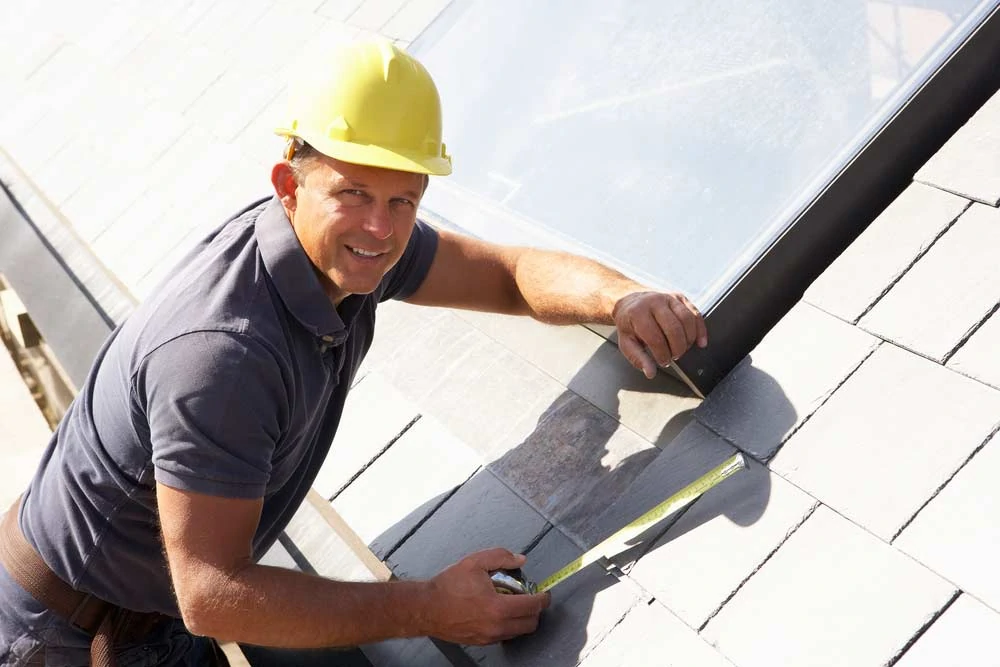Your New Roof: Before, During, and After

Installing a new roof is both exciting and daunting for any homeowner. It is one way of revamping the aesthetic of your home and adding to its vibrancy and also utilizing that rainy day fund.
Before you make this important decision, you’ll want to consider all the vital aspects. Being involved during the installation process is a great way to ensure your roof meets your standards. After the installation, it is paramount for you to clear and care for your roof to ensure it serves its purpose maximally and lasts long on your property.
To get the most out of your next roofing project, we have put together the best ideas, tips, and tricks that you need to equip yourself with beforehand.
Before Installation
Roofing Inspection
When did you last take a close look at your property's roof?
Many homeowners will only try to determine whether they need a new roof when they notice serious damages, such as rotting and leaking. It is a good idea to regularly inspect your roof to determine whether it can still effectively serve you or if it needs replacement.
Some homeowners quickly resort to replacement upon discovering leaks. Discovering roof damages does not have to become a full replacement. Your home may just need partial reroofing or minor repairs.
This makes it extremely important to have a detailed inspection report that will help you make a more informed decision. It calls for you to hire a professional inspector.
Signs That You Need a New Roof
1. Rotting, Presence of Moss and Mold
The presence of mold and rot is evidence of moisture damage. When mold and rot have destroyed the shingles and interfered with the roofing structure, this is a sure sign that you need a new roof. Moss, on the other hand, may not be detrimental to the health of your roofing structure on its own. However, it holds moisture especially during winter which may cause extensive damages.
2. Leaky Roof
We recommend checking your attic for signs of leaking, especially after a storm or heavy rains. Look for the slightest sign of water damage or moisture penetration. Small leaks may easily be repaired by a professional roofer. Extreme or multiple leaks call for a roof replacement. Take the time to determine whether the leak can be repaired before writing your existing structure off.
3. Age
For how long have you had your roof? You need to compare its age against its expected lifespan. If it has exceeded this period, it is time to find yourself a replacement. Inspect the old roof for signs of damage or signs of possible problems in the future.
4. Poor Shingle Condition
The condition of your roof may warrant its replacement. A large number of missing shingles or if your shingles are beginning to curl may necessitate an overhaul.
Prepare for The Installation of Your New Roof
Once you have decided to replace it, it is time to start preparing for the roofing works. Here are things you should do to ensure the roofing process is quick, smooth, and eventually successful:
1. Do Your Roofing Research
Once you are convinced that it's time to replace your old roof, do your homework and find the best professional roofing company near you that will use high-quality materials and do exceptional work.
Even if you will not be the one handling the works, it is important to know the size of your roof and the amount of material you will need to replace it. You can use a free roofing calculator to determine this. You will be able to determine its surface area, its pitch, and an estimate of the number of roofing shingles you will need for the entire project.
Knowing all these details helps you have an estimated budget for the entire project. Shingles, being the main material, will account for about 65% of the total cost.
2. Prepare The Home for The Upcoming Works
If you happen to store some of your valuables in the attic, consider moving them to a safer place. For the bulky items that may be difficult to move, cover them with a cloth to avoid them coming into contact with dust or falling debris.
Remove hanging photos or mirrors from the wall to avoid them falling off due to vibrations from the roofing works. Ensure your utensils are not exposed to dust and cover flowerbeds or landscaping with tarps to protect them from dust and debris. The exterior parts of your home should also be ready for roofing.
During Installation
Proper Installation

Proper installation is paramount when it comes to installing a new roof. If you are going at it alone, familiarize yourself with the roofing process and procedures. Make sure you know how to properly tear off the old shingles and how to install the drip edge. It is also of great importance to know how to install the new roof and how to roll out the roofing felt underlayment.
Since roofing works are delicate and there is no guarantee of proper installation in DIY roofing, it is safer to hire a professional roofing contractor. Professional roofers have the expertise and experience to install it skillfully and within a short time. As the experts go about their work, inspect your property once in a while to make sure the project is on the right course.
Safety
When working on the roof, safety is of the essence. Working on such a project means you will be working on elevated surfaces, most of which are sloped. Sometimes, it may be wet and slippery. In some instances, the roofing structure may be weak and shaky. One should take precautions and follow certain safety guidelines to ensure they are safe throughout the project.
Here are some tips you as the homeowner or your roofers can use to work safely:
- Do not step on the ladder rungs that protrude above the roof.
- When working on wet and slippery surfaces, put on shoes with soft rubber soles that will provide extra traction.
- Have a fall protection kit that consists of a rope, a harness, and a hook. A roof is valuable, but not worth dying for.
- Extend the top of the ladder slightly above the edge of the roof. You can hang on this protruding part as you either step onto or off its surface.
- Keep dust and debris off the roof at all times.
- Be cautious of your surroundings. Erect proper signage that warns passers-by of the ongoing roofing works.
After Installation
Clearing The Site

The roofing contractor will clear your yard of any waste shingles, tools, and old shingles. You must make sure your yard and driveway are clear of any waste nails and debris produced during the roof replacement process. You don't want to puncture your car's tires by running over nails that weren’t picked up after the roofing works.
The cleaning process does not begin after the completion of the works— it should be done throughout the roofing process. The roofing contractor should have a crew that tears off the old roof and another crew that stays on the ground to ensure the debris is collected and put in the dump trailer.
Clearing Off the New Roof
After the installation of the new roof is complete, the roofing contractor will use a handheld blower to blow dust and debris off the new roof. This also clears the little granules that break off the new roofing shingles. Your gutters must also be cleared off.
The contractor will blow them and run a magnet through them to pick up any loose nails that may have not been removed during the tear-off process. It is also important to blow the downspouts to ensure anything that ran down the gutters is completely off.
Post-Replacement Inspection
Your new roof is in place and looking good! Your yard is clear of evidence that there was some work going on. So, what next? The roofing contractor should visually inspect your yard and landscaping to catch any debris that missed the eyes of the crew. This entails going around your home with magnets to collect any remaining nails.
Once this is done, the contractor will load their tools and roofing equipment while cleaning the paved surfaces. Once they have cleared off your landscape and driveway turning your property back into what it was, with the addition of a brand new roof, you can go ahead and bring the interior of your home back to life.
Conclusion
Installing a new roof entails many activities from start to finish to ensure the process goes smoothly and is done properly.
There are two things that are of the utmost importance during the installation process— proper installation and safety. If a roof is not properly installed, its lifespan may considerably reduce and it may cause problems to the entire property. A poorly installed roof also reduces your chances of getting a warranty. We cannot emphasize more on safety; roofing works are extremely dangerous and should be left to those who have the technical know-how.
If you follow this simple guide, you will have a great reroofing experience and be thoroughly satisfied with your new roof. Contact Fortress Roofing & Exteriors if you would like to talk about your roofing project and how we can help make it as simple as possible, for a great price.




